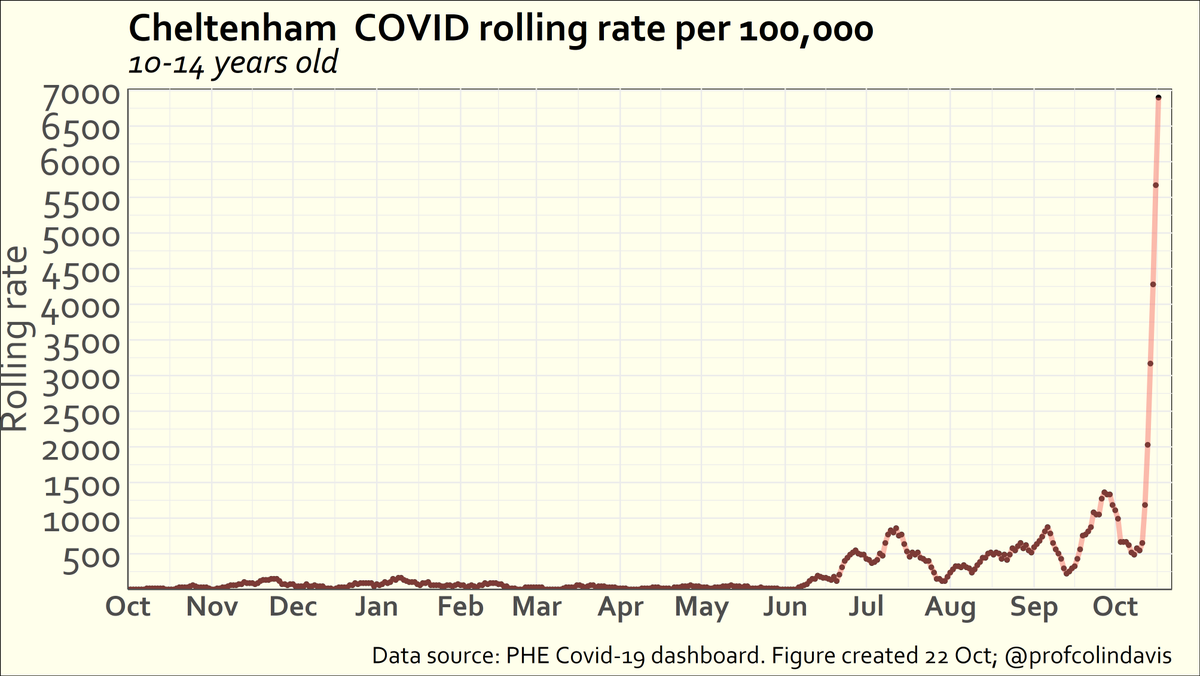
I feel a sense of deja vu, looking at Charnwood once again. It's interesting because it's one of those places where schools go back earlier than other parts of England, so it's a kind of canary in the Covid mine. Rates have grown steeply there in the last week in 5-14 year olds. 

Although school age children have by far the highest rates in Charnwood, there is one adult age group that is catching up: 40-44 year olds. This is a familiar pattern. 

The short thread below was the last time I looked at Charnwood. Showing typical caution in causal attribution I noted that the increase *could* just reflect "back-to-school testing". What happened subsequently suggests it wasn't.

https://twitter.com/ProfColinDavis/status/1434548342864982023?s=20

Other places that are showing rapidly increasing rates in children are Melton, Leicester, Newark & Sherwood, Oadby & Wigston, Hinckley & Bosworth, and Blaby. Of course, it *could* just be a coincidence that these are all areas in the East Midlands where schools went back earlier.
As a postscript, here're the latest available age-specific data from Melton. I believe the claim of herd immunity advocates is that places where rates got so high last term (4% testing positive in a week) should now resist further outbreaks. I guess the virus didn't get the memo. 

• • •
Missing some Tweet in this thread? You can try to
force a refresh











